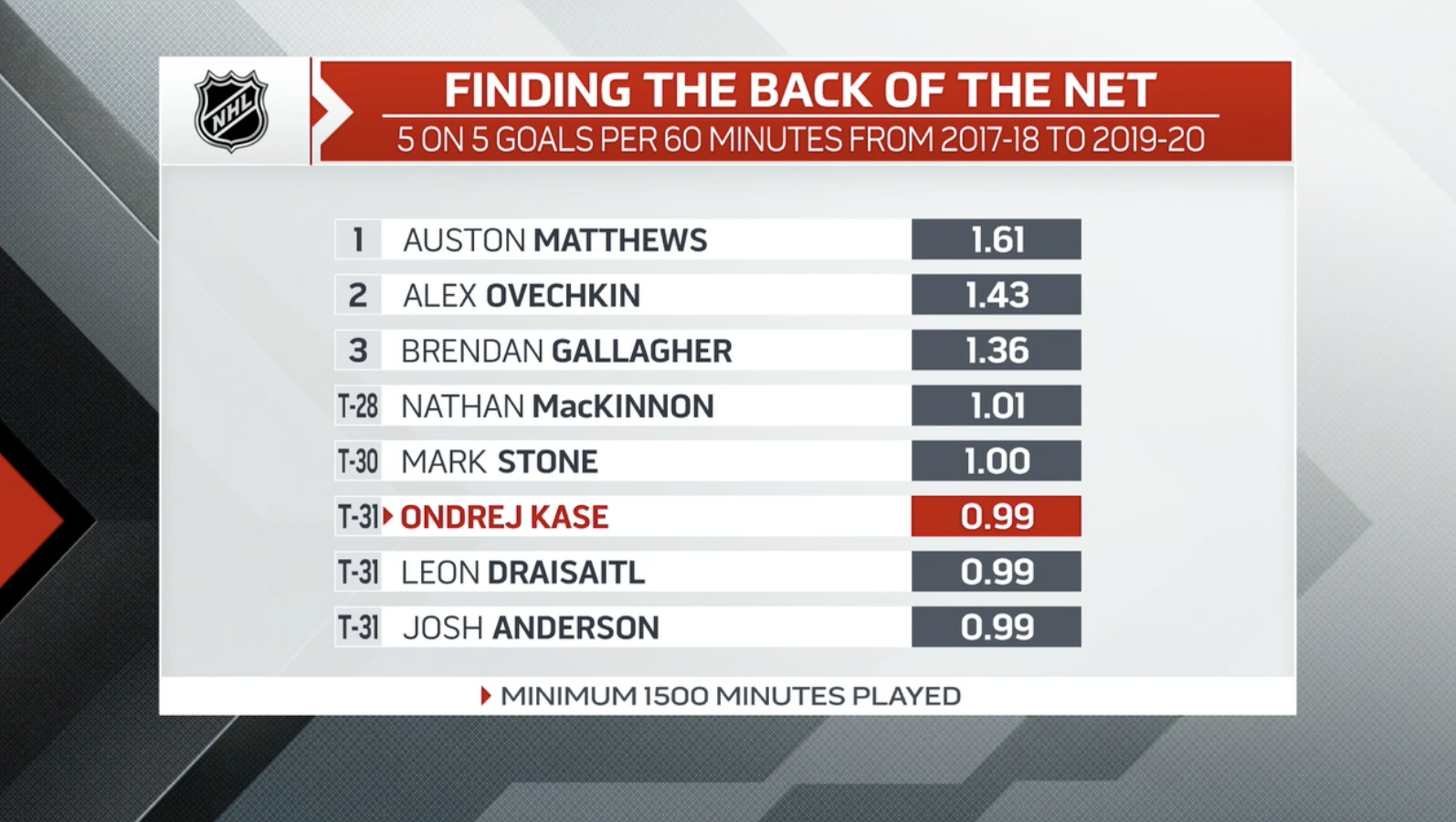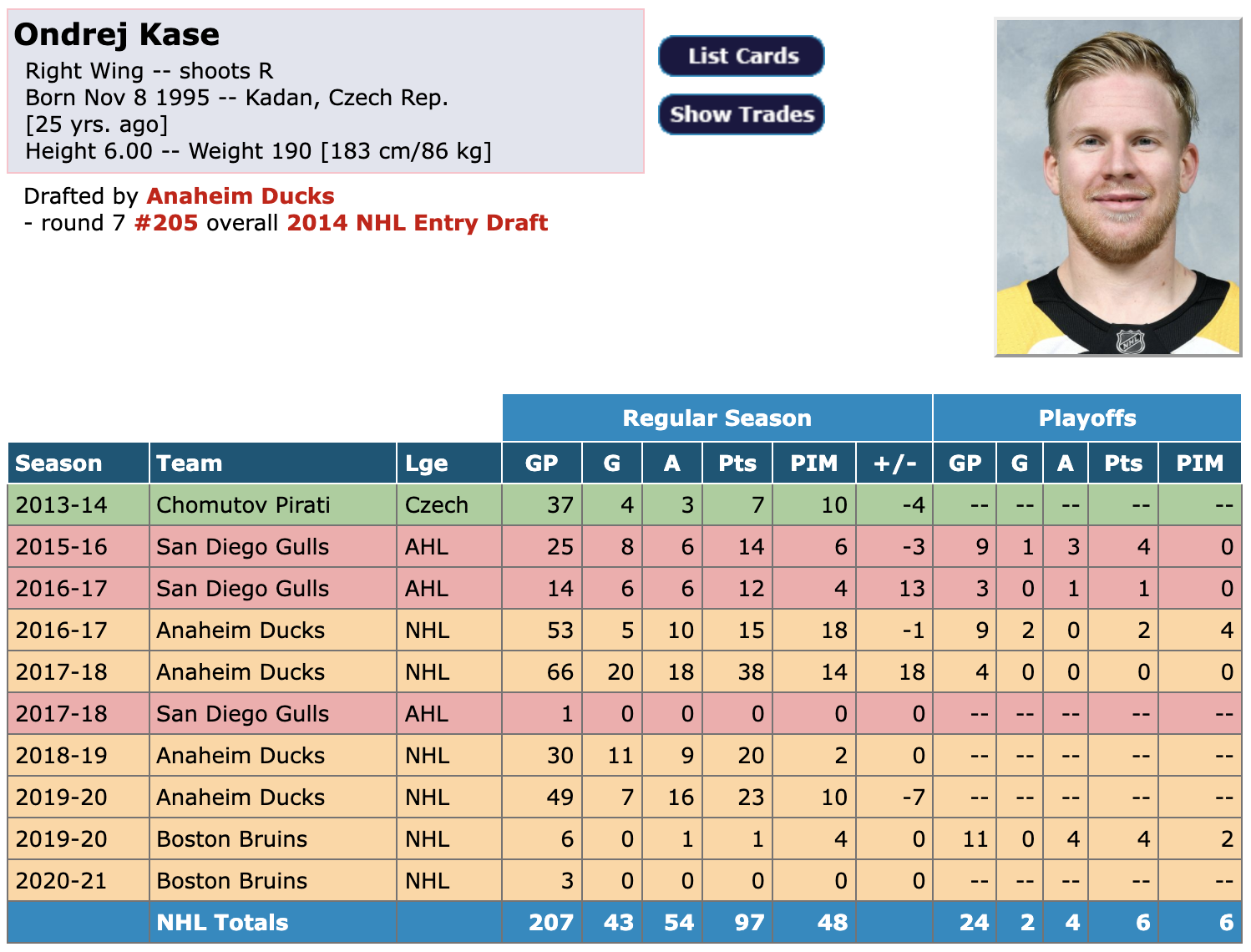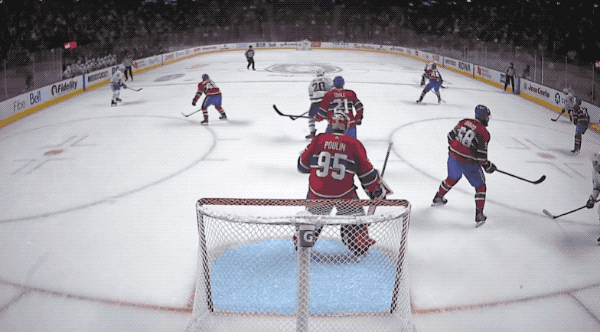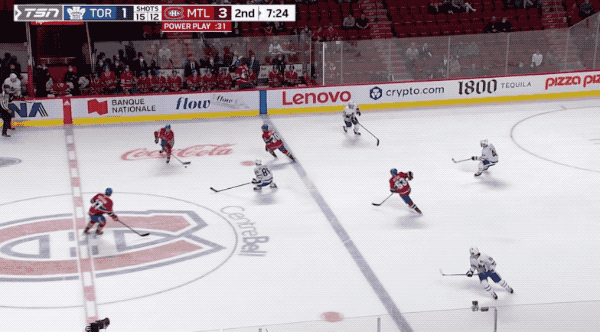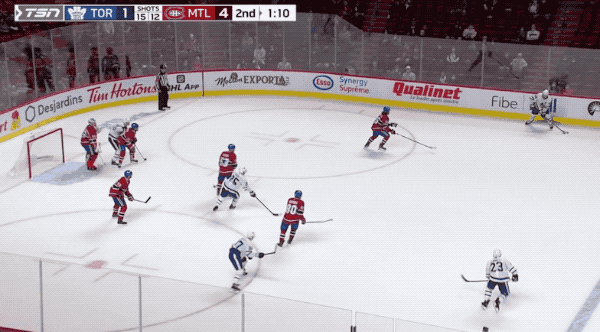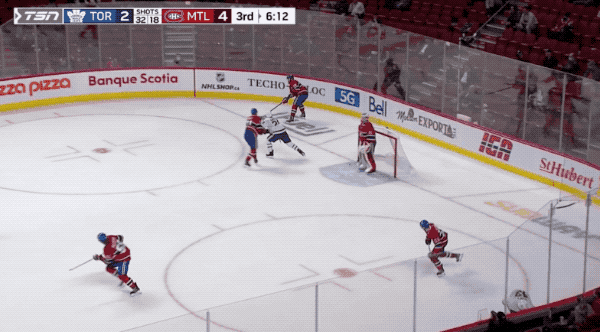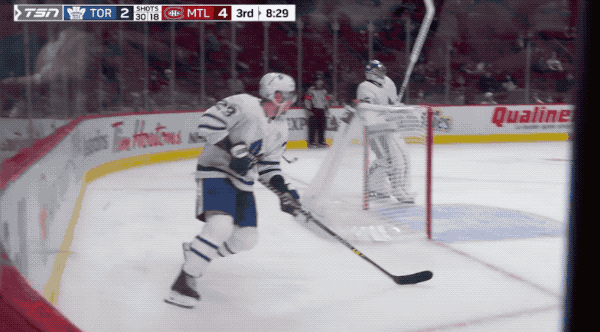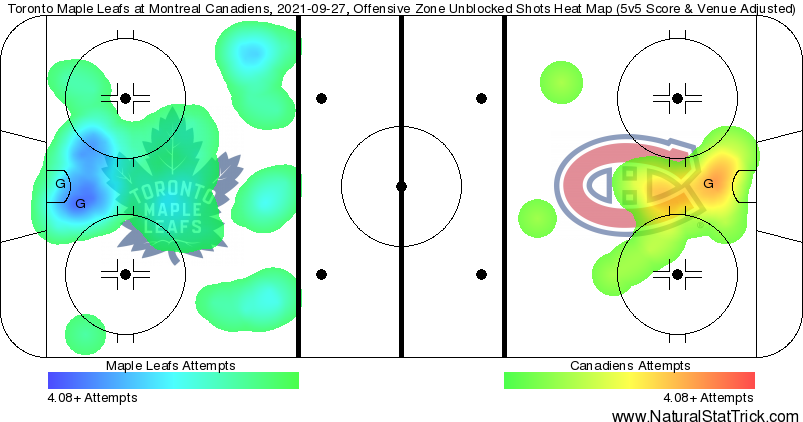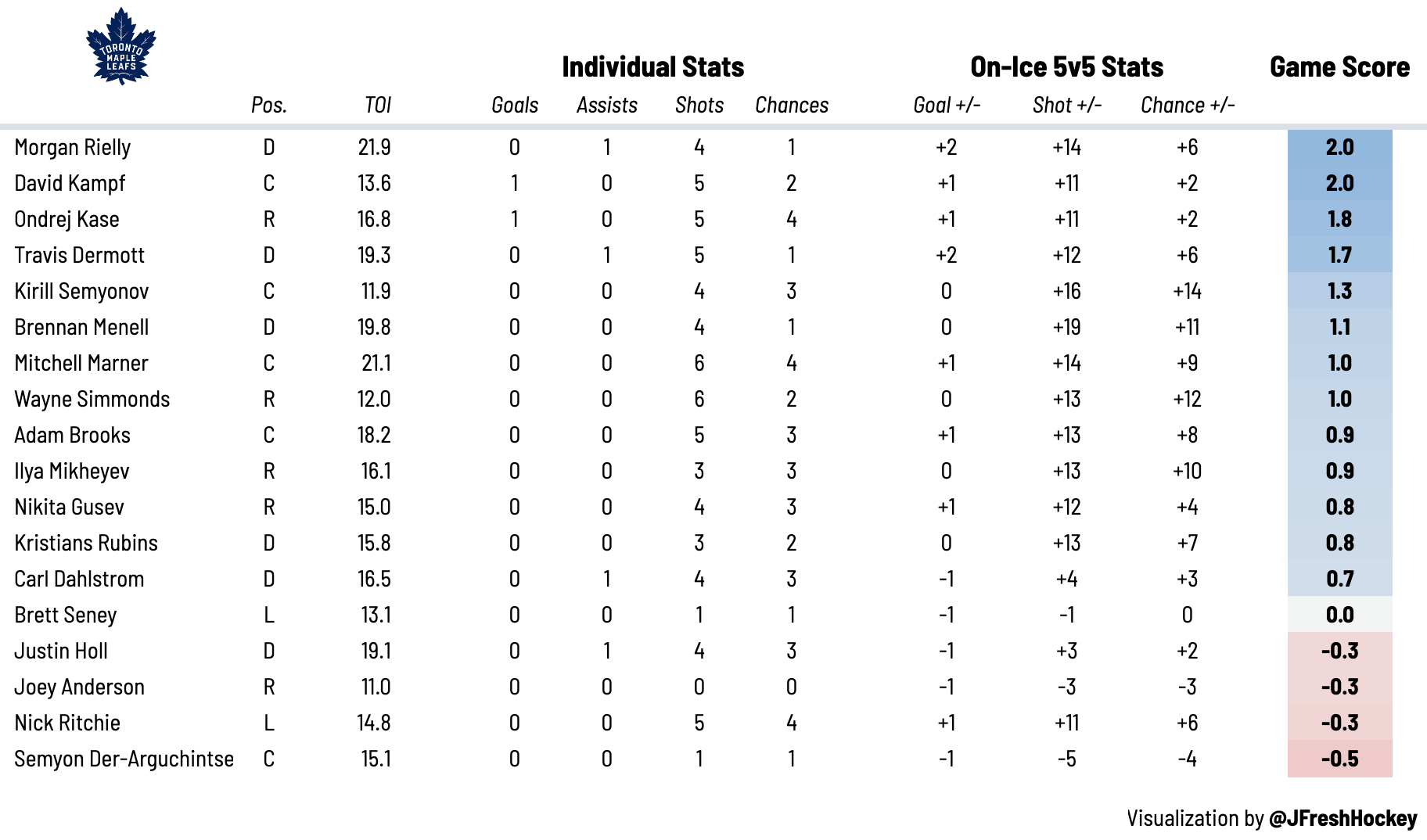Anyone else miss Leafs hockey as much as I did?
I’m well aware that it’s the preseason following yet another disappointing Round 1 exit in the playoffs, but I can’t help but feel joy as I try to break down my favourite hockey team playing my favourite sport. No, we shouldn’t be taking too much out of these games, but it’s professional athletes in a competitive arena, so I’m of the opinion there are always things we can try to analyze.
That was made a lot more difficult because of the officiating standard in this game, resulting in a barrage of penalties throughout the majority of the first 30 minutes. It’s hard to evaluate NHL players at 5v5 when most of the minutes are being played on special teams.
This isn’t to say I disagree with the crackdown on cross-checking, which was clearly becoming a major issue last season, but the players are obviously still adapting to the new penalty standard, which probably means we’ll be watching a lot more hockey games like the one on Monday night.
Montreal ended up defeating Toronto 5-2, but frankly, who cares about the final score in the preseason? Coaches and management will be gauging the performance of specific players during these games, which is going to be our goal as well.
So let’s get to it: who stood tonight?
Midseason Form
Ilya Mikheyev
He was the best player on the ice for my money. Did he convert on any of his Grade-A chances? Of course not! This is Mikheyev we’re talking about, after all.
Mikheyev should just dump and change on breakaways.
— Bryan Hayes (@HayesTSN) September 27, 2021
Then again, Mike Johnson brought up a great point on the broadcast that I was planning on making in tonight’s article anyway.
Early in his NHL career, Zach Hyman was statistically the worst finisher in the NHL. If you compared the quality of the shots he was generating (expected goals) to the rate he actually scored at (actual goals), it was astonishing just how many goals he was leaving on the table. We’re talking about cross-seam passes into the slot that he was whiffing on, but when you fast-forward a couple of years, he developed that aspect of his game and scored at a 30-plus goal rate per 82 games.
Is Mikheyev ever going to reach those heights? Probably not, but I also doubt he’s going to keep converting on such a low percentage of 2-on-1s and breakaways. He led the league in shorthanded chances last season and scored on zero of them. Us nerds like to call that “unsustainable”, even for historically below-average finishers.
Watching him win battles tonight on seemingly every patch of the ice, regaining puck possession, and then forcing his way to the high-danger areas, I can’t help but think he’s going to get some bounces and eventually capitalize on some of these chances. With his combination of speed, length, and power, his line is going to have the puck in the offensive zone.
Now it just comes down to whether or not he can improve his scoring touch.
Ondrej Kase
He’s been one of my favourite players in the NHL for about half a decade now, so it was awesome getting to see him make some plays in blue and white tonight. Unlike most of the zone entry wizards I tend to be obsessed with, Kase is also quite adept at winning puck battles, using his body to “box out” the man defending him while he powers his way to dangerous areas on the ice.
What’s great about Kase is that he isn’t afraid to shoot from those spots, and when he does, he’s among the best in the league at putting the puck in the net.
The biggest question mark with him was always going to be health. He’s had multiple concussions in his career and has yet to play a full season, only getting into three games last year. A quick look at his HockeyDB page will help explain why the Leafs were able to sign him for such a bargain contract this offseason.
Joffrey Lupul, anyone?
If Kase can stay healthy this season — and that’s a big if — his $1.25 million will easily be Toronto’s best contract on the books in 2021-22. We’re talking about a legitimate top-six NHL player who can put the puck in the net at an elite rate. The problem is we’re also talking about a guy who will be lucky to play 50 games and still be on the active roster come playoff time.
Mitch Marner
It’s nice to switch gears and hear some nice things said about Marner for a change. His line started slowly in the first period, but he really picked up the pace in the second and third, using his creativity to get his teammates some open looks off the rush. He was also threading no-look passes from below the goal-line in the offensive zone while making some high-effort defensive plays to win the puck back in the neutral zone.
My favourite clip of his came on the Adam Brooks goal that got waived off because of an offside review — an offside review — in a preseason game. More on that later, but I was really impressed with Marner’s ability to win body position in front and quickly find his open teammate for the assist.
This could be a little sneak preview of what’s to come on the power play. The Leafs are putting Marner in the bumper role to start the year, similar to how the Lightning use the undersized Brayden Point in that spot. Now, Marner is nowhere near the goal scorer Point is, but #16’s vision and passing ability from the middle of the rink could lead to some nice little one-touch passes for easy tap-ins.
My one big concern came at the tail end of the game, when the Leafs pulled their goalie and had Marner quarterback the 6v5 “power play” from the right wall. I get that it’s just a preseason game and the Leafs were trying to make a game out of it, but I don’t agree with the process behind putting Marner back in his comfort zone when the team is clearly trying to force him to explore other areas of the ice on the power play.
We all know he can thread slap passes from the half-wall, but I want to see him making creative plays from the bumper spot or the goal-line with the man advantage. On a team with shooters named Auston Matthews, John Tavares, and William Nylander, they need to find a way to maximize Marner’s passing ability, and that isn’t by putting him in a shooting spot on the power play.
The Good, The Bad, and The Rielly-Dermott Pair
The peaks and valleys of Morgan Rielly (and Travis Dermott) were pretty noticeable in this game, so let’s walk through them. We’ve praised so many players up until this point, so let’s discuss some of the negatives for once.
Rielly got burned twice defensively early on, letting his man sneak behind him off the rush for a partial breakaway. Later in the game, he gave way too much space to Josh Anderson, who promptly beat Petr Mrazek with a wrister.
If this were just a one off, I probably wouldn’t even mention it. The problem is that Rielly’s gap control has been a constant area of criticism throughout his career. Despite his elite skating ability when he’s going north-south, he has a tendency to concede far too much open ice when he’s skating backward, and it leads to scoring chances against like these.
Then there’s the other side of the coin, where Rielly can make magical plays in the offensive zone when he activates down the wall. In the following clip, he gets himself open, skates into some dangerous ice, and then threads a pass through the crease to Kase, who’s going to finish on those opportunities.
Rielly giveth and taketh away. You have to take the good with the bad when it comes to his game, which is why having a partner like TJ Brodie made such a big difference for him.
On the flip side, when he’s paired with a Travis Dermott, there’s much less stability on the back-end. Brodie is much more patient when defending the rush, whereas Dermott is always looking to attack puck carriers. When it works, it’s great and you end up with the puck.
When it doesn’t, it looks like this.
That’s a bit of a weird play, but Dermott also got walked by #67 on Montreal tonight in the neutral zone, leading directly to a 2-on-1.
The frustrating part about evaluating Dermott is that he clearly has the tools to be an effective NHL defenseman — and I mean one that can play in the top four. If you watched him in the offensive zone tonight, he looked much more comfortable roaming around the zone, getting himself open to continue passing sequences off the cycle.
He was also playing with a surprising amount of confidence considering what happened the last time he tried a spin-o-rama in the defensive zone.
The reason I pull up this clip is that it demonstrates a few things:
- Dermott’s ridiculous edge-work allows him to create open space for himself on the breakout.
- Dermott’s reluctance to make that “next play” – he hesitates and allows the forechecker he just shed to get back in the play. Montreal ends the sequence with five Canadiens behind the puck.
There are a lot of raw tools there, but at age 24, it really needs to start coming together for Dermott. The average NHL player peaks at this age, and while I still hold out hope he has the talent to drive play in the right direction at 5v5, I fear he’ll never reach his full potential on this team.
Had he gone to a team like Seattle and played in their top four, we might be watching more of a “breakout” type season. Instead, we’ll likely be watching a guy play 12-14 minutes a night on a sheltered third pair…again. Yippee.
Who’s that guy!?
I had to do a double-take every time #94 and #61 touched the puck in the first period, so let me quickly touch on them.
Kirill Semyonov (#94)
After playing the last four years for Avangard Omsk in the KHL, hovering around a half-point per game in those seasons, I was stunned to see just how comfortable Semyonov looked making plays at the NHL level. He was making quick little slip passes under pressure to get teammates into open ice, winning battles along the boards, and even getting a bit of time on the PK.
He’s unlikely to play a game for the big club this year, but I’m intrigued by this player and look forward to watching him get some more minutes over the next two weeks. If you’re looking to learn more about Semyonov, here’s an article I suggest by Josh Simpson.
Brennan Menell (#61)
Another KHL import, Menell is a smooth-skating, puck-moving defenseman who shoots right-handed. Considering how difficult it is to find those at the NHL level, I’m always interested when I see a RHD who can go back on a loose puck, shed the first forechecker, and start moving play up the ice.
Menell did get rocked once on one of those plays, but for the most part, he was smooth and effective in advancing the puck up the ice. I also enjoyed watching him in the offensive zone, walking the blue line to keep pucks in, and making the next pass to keep the play going.
Again, much like a lot of these guys, he probably ends up in the AHL to start the year, but he’s an interesting player to keep an eye on at 24 years of age.
David Kampf (#64)
Unlike the last two players we mentioned, Kampf is all but guaranteed to make the roster considering his two-year, $1.5 million contract. The reason I stuck him here is that I was pleasantly surprised by his play, while half the time asking myself, “Who the heck is number 64?”
His defensive game is what really stands out; he plays a lot longer than his listed height of 6’2, much like Mikheyev. In fact, if I were to make another Leafs comparable, I’d call him a Frederik Gauthier who actually finishes his checks. Kampf plays a conservative game, staying on the defensive side of the puck, which is going to lead to a lot of boring 5v5 hockey when he’s on the ice.
Then again, that’s exactly his purpose as a player.
What would you say…you do here?
I wanted to wrap things up by briefly mentioning some players who really hurt their cause in this game. It was pretty clear to me that Brett Seney couldn’t keep up with the NHL pace of play, while his linemate, Joey Anderson, barely touched the puck in his 11 minutes of ice time.
Nikita Gusev didn’t do himself any favours, failing to make plays with the puck in transition. His high-end skill is supposed to be his calling card, but he really struggled to break down his man in 1-on-1 situations. In a similar vein, I didn’t love Adam Brooks‘ game tonight. He failed to gain the zone on multiple occasions, leading to some quality rush opportunities for Montreal the other way.
Defensively, Carl Dahlstrom was a disaster in this game, getting beat behind on multiple occasions, not to mention allowing his man to get open in front for a deflection goal. Justin Holl didn’t have his finest night, either, but it’s pretty tough to survive shifts when your partner is struggling as much as Dahlstrom was tonight.
Wayne Simmonds looked underwhelming. I understand that he’s a veteran and that this is a preseason game, but considering how strong some of Toronto’s depth forwards have looked already, I’m not sure there’s a strong argument that Simmonds is one of their top 12 or 13 forwards right now.
He’s going to play because of factors not related to his 5v5 play-driving ability, which I find troublesome. He’s on a two-year contract with a no-trade clause and I’m concerned the Leafs brass won’t have the courage to healthy scratch him, even though it’s likely going to be deserved based on the play of his competition.
Heat Map
Here’s a quick look at where each team’s shots were coming from at even strength, courtesy of Natural Stat Trick.
The Leafs controlled two-thirds of the shots and scoring chances in this game at 5v5 and lost because hockey is a cursed sport.
Game Score
Game score is a metric developed by The Athletic’s Dom Luszczyszyn to measure single-game performance. You can read more about it here.
Tweets of the Night
Challenging for offside in the preseason should come with a prison sentence.
— Steve “Dangle” Glynn (@Steve_Dangle) September 28, 2021
I tend not to be too supportive of “tough on crime” narratives since there isn’t much evidence to support their effectiveness – but we should probably throw the book at Dominque Ducharme.
There go nine minutes of our lives we’re never getting back.
i do love the chatter from the first few preseason games. wow can you believe fourth-round prospect Winston Fluck looked this good against a roster of middling AHLers and a few NHL guys who transparently don't give a shit? yes tbh i can believe it
— Acting the Fulemin (@ATFulemin) September 27, 2021
I’m just saying, Fluck could be a difference maker this year.
Final Grade: 2/6 preseason games done, 4 to go!
We can do this, folks!
























